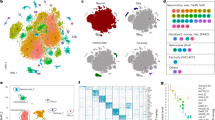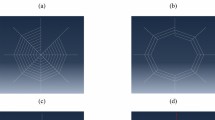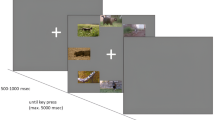Abstract
During their evolutionary history, some species of spiders have changed from a nocturnal to a diurnal lifestyle, and the important change in their environment was irradiation by sunlight. Orb webs of diurnal spiders may be markedly affected by exposure to ultraviolet (UV) irradiation, whereas those of nocturnal spiders may be unaffected. It is of great interest to consider the effects of UV rays on the mechanical properties of spider silks from the viewpoint of evolution. The webs of orb-weaving spiders must trap insect prey, which closely relates to the breaking energy of the spider silk constituting the orb webs. The effects of UV rays on the mechanical properties, particularly the mechanical breaking energy, of the silks of diurnal and nocturnal spiders were investigated. UV rays mechanically strengthened the draglines of diurnal Nephila clavata and two other kinds of diurnal spiders (Leucauge blanda and Argiope bruennichii), suggesting that the ability of the orb web to capture insects requires less maintenance. However, UV rays mechanically weakened the draglines of nocturnal Yaginumia sia and one other kind of nocturnal spider (Neosona nautica), suggesting a decrease in the ability of the orb web to capture insects. The results provide strong support that diurnal spiders are in a more evolved stage than nocturnal spiders, so they secrete silks with an evolved mechanical resistance against UV irradiation. This study suggests a means to search for biological materials with resistance to UV rays.
Similar content being viewed by others
Log in or create a free account to read this content
Gain free access to this article, as well as selected content from this journal and more on nature.com
or
References
Kelber, A. & Roth, L. S. V. Nocturnal colour vision—not as rare as we might think. J. Exp. Biol. 209, 781–788 (2006).
Peak, J. G., Woloschak, G. E. & Peak, M. J. Enhanced expression of protein kinase C gene caused by solkar radiation. Photochem. Photobiol. 53, 395–397 (1991).
Meybeck, A. & Windle, J. J. An E.P.R. Study of peptide after U.V. irradiation. Photochem. Photobiol. 10, 1–12 (1969).
Setoyama, K. ESR studies on free radicals in U.V.-irradiated silk fibroin. J. Seric. Sci. Jpn. 51, 271–278 (1982).
Seinfeld, J. H. & Pandis, S. N. (eds). in Atmospheric Chemistry and Physics: from Air Pollution to Climate Change (John Wiley & Sons, USA, 1998).
Bristowe, W. S. The World of spiders, (Collins, London, 1958).
Foelix, R. F. Biology of Spiders, (ed. Foelix, R.F.), p85 (Harvard University Press, Cambridge, MA, 1982).
Jackson, R. R. Prey of the jumping spider Phidippus johnsoni (Araneae: Salticidae). J. Arachnol. 5, 145–149 (1977).
Osaki, S. Seasonal change in color of spiders' silk. Acta. Arachnol. 38, 21–28 (1989).
Craig, C. L., Bernard, G. D. & Coddington, J. A. Evolutionary shifts in the spectral properties of spider silks. Evolution 48, 287–296 (1994).
Osaki, S. Aging of spider silks. Acta. Arachnol. 43, 1–4 (1994).
Osaki, S., Yamamoto, K., Kajiwara, A. & Murata, M. Evaluation of the resistance of spider silk to ultraviolet irradiation. Polym. J. 36, 623–627 (2004).
Osaki, S. Ultraviolet rays mechanically strengthen spider's silks. Polym. J. 36, 657–660 (2004).
Osaki, S. Spider silk as mechanical lifeline. Nature 348, 419 (1996).
Osaki, S. Is the mechanical strength of spider's drag-lines reasonable as lifeline? Int. J. Biol. Macro. 24, 283–287 (1999).
Rauk, A., Yu, D., Taylor, J., Shustov, G. V., Block, D. A. & Armstrong, D. A. A comparison of the alpha-C-H bond enthalpies of amino acid residues in a protein model environment. Biochemistry 38, 9089–9096 (1999).
Marshall, I. & Todd, A. The thermal degradation of polyethylene terephthalate. Trans. Faraday Soc. 49, 67–78 (1953).
Yokota, R. Mechanical properties: Increase in mechanical properties ascribed to high polymerization. Kobunshi (in Japanese), 39, 371 (1990).
Grobbelaar, C. J., du Plessis, T. A. & Marais, F. The radiation improvement of polyethyelene prostheses. A preliminary study. J. Bone and Joint Surg. 60-B, 370–374 (1987).
Nishikubo, T., Kameyama, A., Tsutsui, K. & Iyo, M. Synthesis and photochemical reaction of novel p-alkylcalix[6]arene. J. Polym. Sci. Part A. Polym. Chem. 37, 1805–1814 (1999).
Osaki, S . Thermal properties of spider's thread. Acta Arachnologica 37, 69 (1989).
Matsuhira, T., Yamamoto, K. & Osaki, S. UV-resistivity of spider silk. Polym. Prept. Jpn. 59: No. 1, 1887 (2010).
Acknowledgements
We are grateful to Ms Riye Ishikawa and Yumi Ida for helping in mechanical measurements.
Author information
Authors and Affiliations
Corresponding author
Rights and permissions
About this article
Cite this article
Osaki, S., Osaki, M. Evolution of spiders from nocturnal to diurnal gave spider silks mechanical resistance against UV irradiation. Polym J 43, 200–204 (2011). https://doi.org/10.1038/pj.2010.119
Received:
Revised:
Accepted:
Published:
Issue date:
DOI: https://doi.org/10.1038/pj.2010.119
Keywords
This article is cited by
-
Molecular weight of Nephila clavata spider silk
Polymer Journal (2015)
-
Effects of UV irradiation on the molecular weight of spider silk
Polymer Journal (2013)



